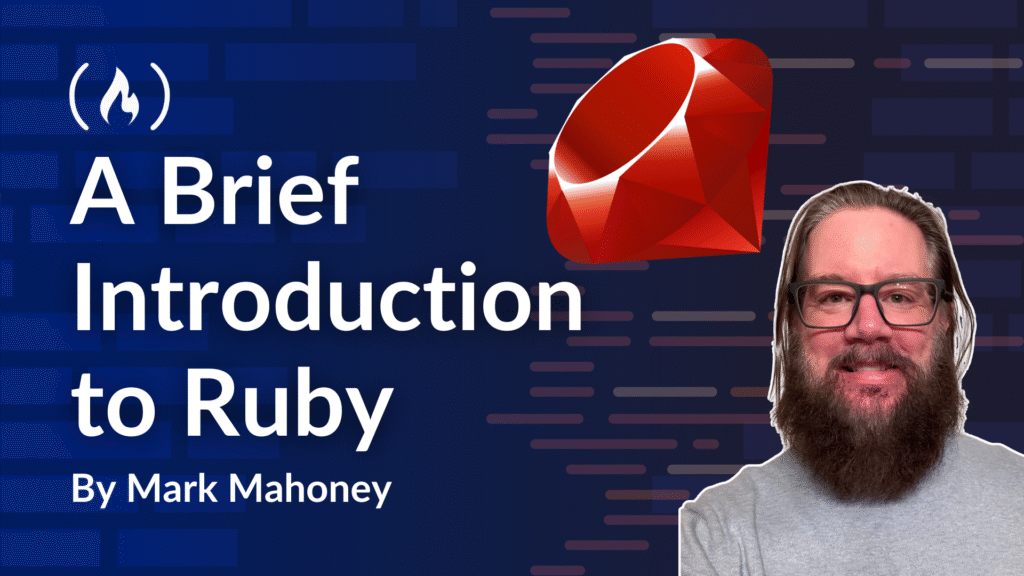Ruby is a programming language designed with developer happiness in mind. Its elegant and intuitive syntax makes coding not only productive but also enjoyable. Ruby stands out with its powerful metaprogramming capabilities, allowing developers to treat code as data and manipulate it at runtime.
While many modern languages offer similar features, Ruby consistently delivers a seamless and joyful experience. Whether you’re building a startup MVP, a scalable enterprise application, or a lightweight API, Ruby has you covered with frameworks like Rails and Sinatra.
Despite the growing popularity of JavaScript and Python, Ruby remains a valuable language to learn, not just for its utility, but for how it teaches you to write clean, expressive, and maintainable code.
If you’ve heard of Ruby but never used it, this tutorial is the perfect starting point. Designed to be completed in an afternoon, it offers a glimpse into what makes Ruby so beloved by developers. While it doesn’t cover every aspect of the language, Ruby’s intuitive nature ensures you’ll be well prepared to dive right into frameworks like Sinatra or Rails after completing it.
Code Playbacks
Code playbacks are a unique way to learn about programming. They are guided walkthroughs of code, allowing you to see not just the code itself but also the thought process behind it. This approach helps you understand not only what the code does, but why it was written that way. Here is a short video to show how to move through a code playback:
By registering on Playback Press, you’ll gain access to an AI assistant that can answer your questions about the code. This makes learning even more interactive and personalized. Watch this video to see how to work with it:
A Brief Introduction to Ruby
You can find my entire collection of Ruby code playbacks in my free book, “A Brief Introduction to Ruby”. Here’s a quick look at what you’ll learn:
Highlights
-
1.1 Hello Ruby!!!: Write your first Ruby program and learn how to run it from the terminal.
-
1.2 Variables and Types: Explore Ruby’s variables, constants, and string interpolation.
-
1.3 Selection and Looping: Master control flow with if statements, loops, and ranges.
-
1.4 Arrays: Work with arrays, one of Ruby’s most versatile data structures.
-
1.5 Hashes: Learn about hashes, Ruby’s equivalent of dictionaries or associative arrays.
-
1.6 Methods: Write reusable code with methods, parameters, and return values.
-
1.7 Closures: Discover how to pass code into methods and execute it with
yield. -
1.8 Iterators: Simplify data iteration with Ruby’s powerful higher-order methods.
-
1.9 Classes in Ruby: Build objects with classes, instance variables, and inheritance.
-
1.10 Interacting Classes: Create cooperating classes and explore Ruby’s “duck typing.”
-
1.11 Unit Testing in Ruby: Write tests to ensure your code works as expected.
Conclusion
Ready to start your Ruby journey? Begin with the first playback and experience how fun and intuitive Ruby can be. Whether you’re a complete beginner or an experienced developer, there’s something here for everyone!
I’d love to hear your thoughts! Feel free to share your comments, questions, or feedback via email: mark@playbackpress.com. Your input helps me improve and create even better content.
If you’ve found this tutorial helpful, consider supporting my work through GitHub Sponsors. Your contributions help cover hosting costs and keep Playback Press free for everyone. Thank you for helping me continue creating educational resources for the developer community!
Source: freeCodeCamp Programming Tutorials: Python, JavaScript, Git & MoreÂ
